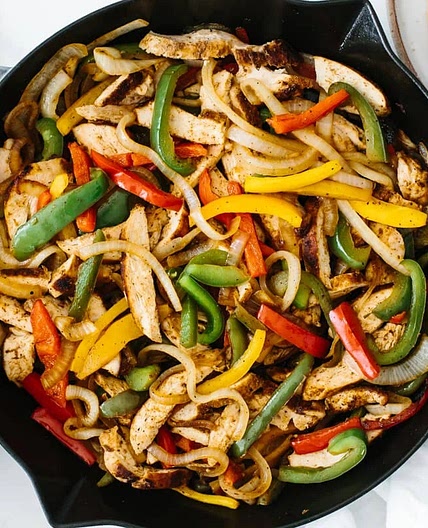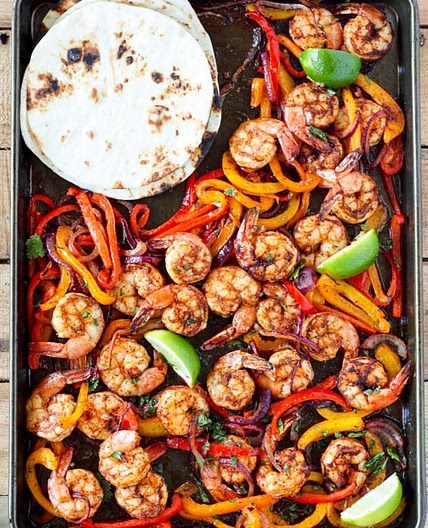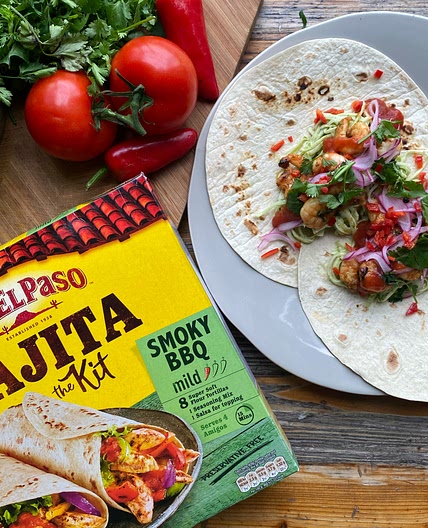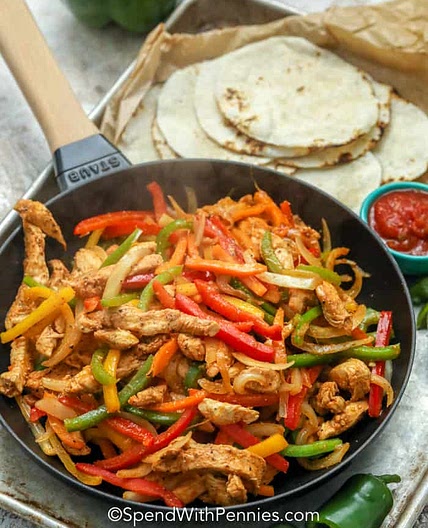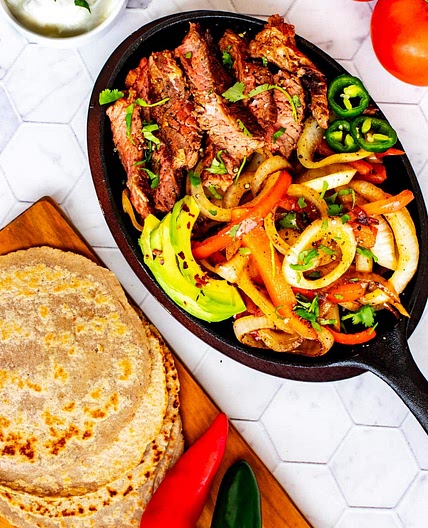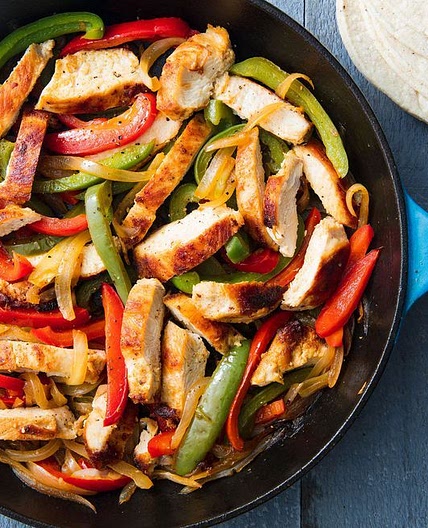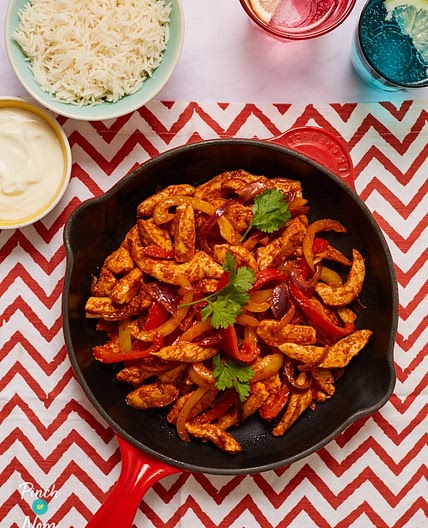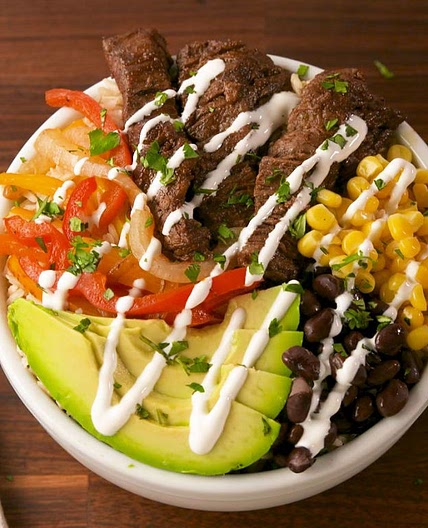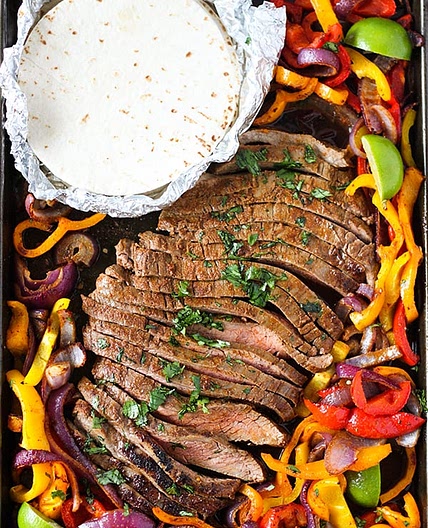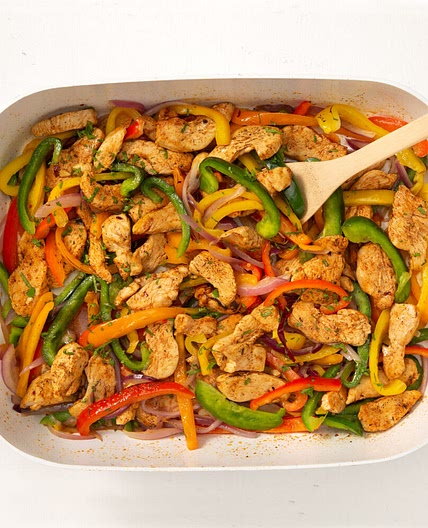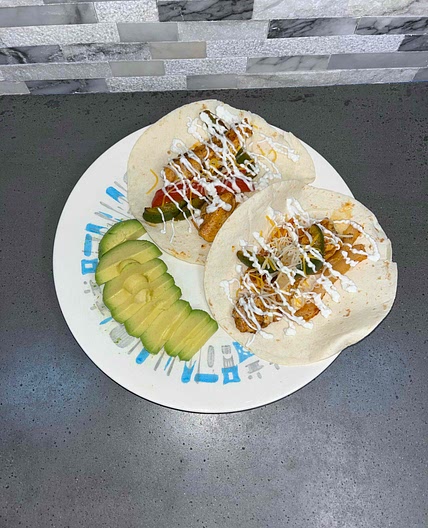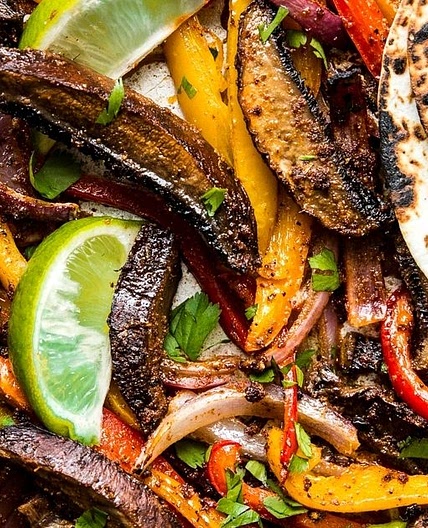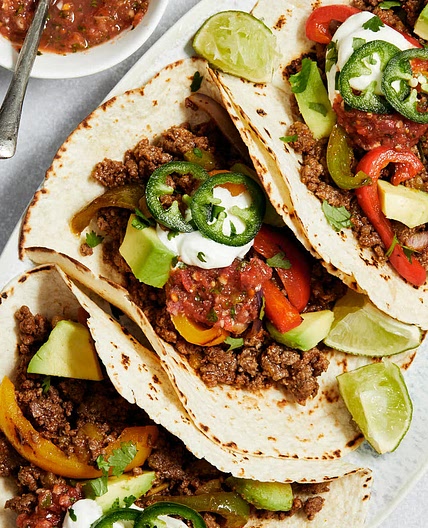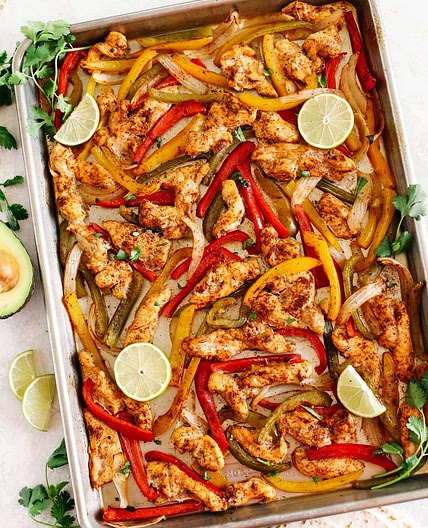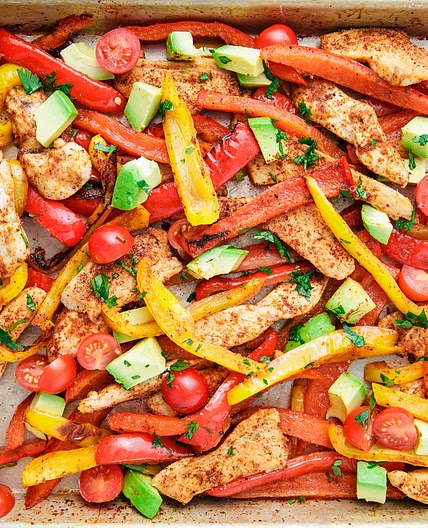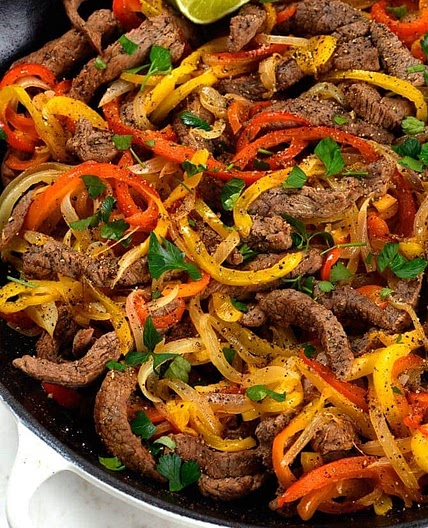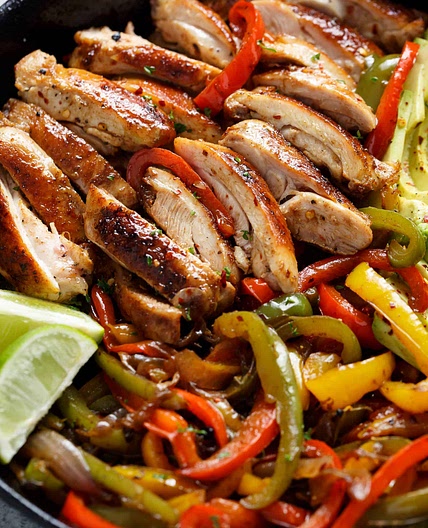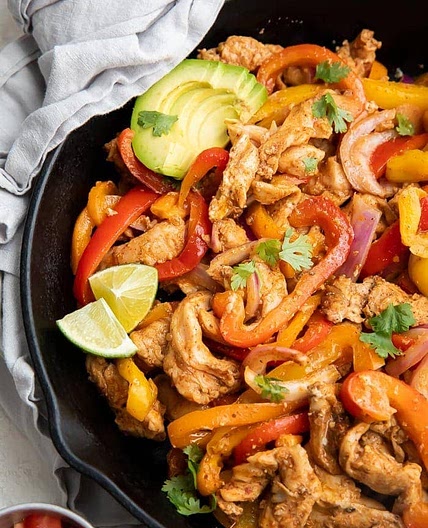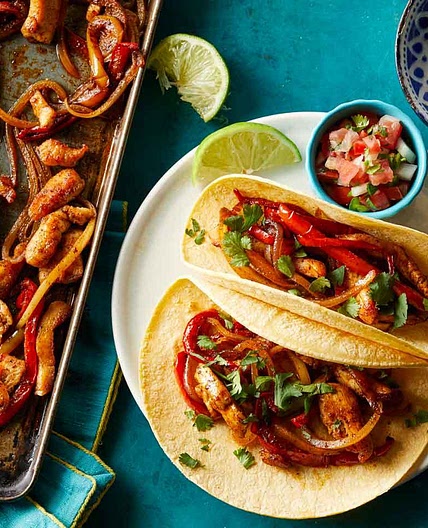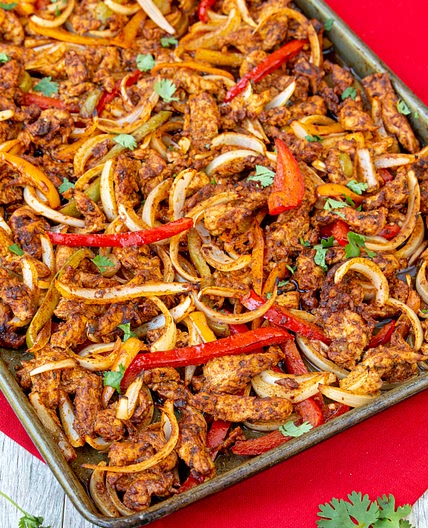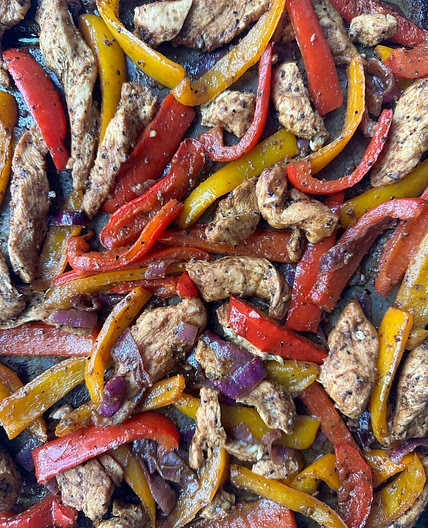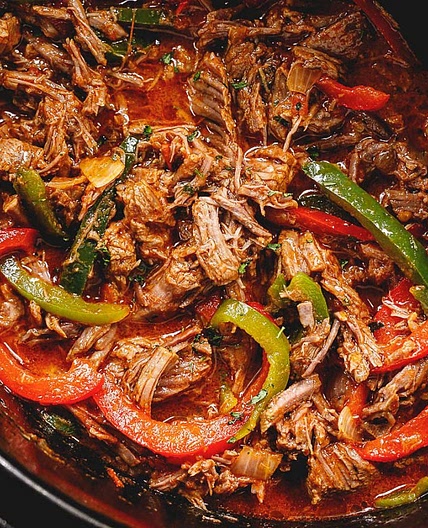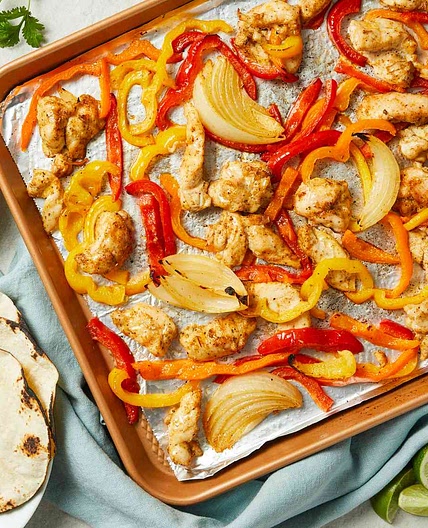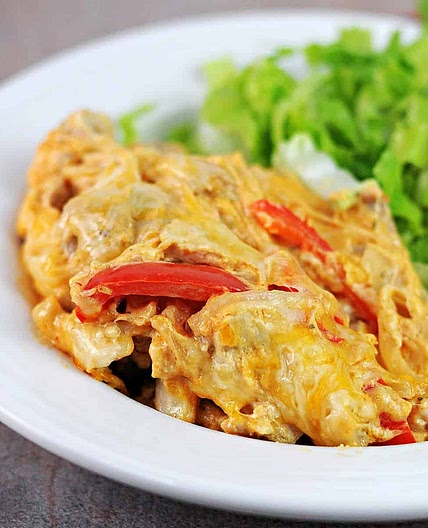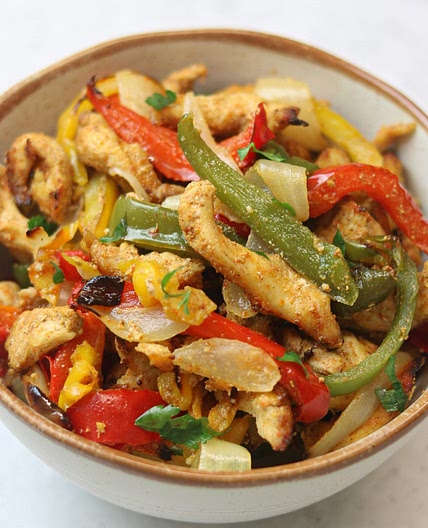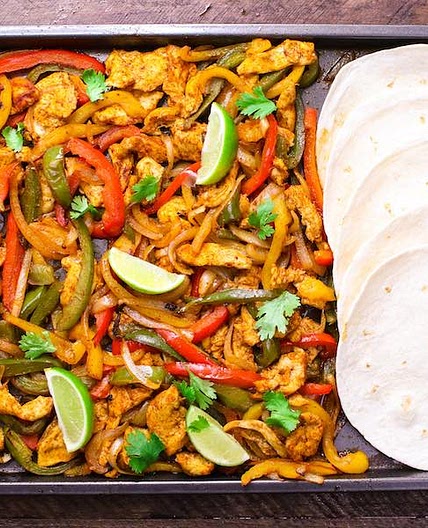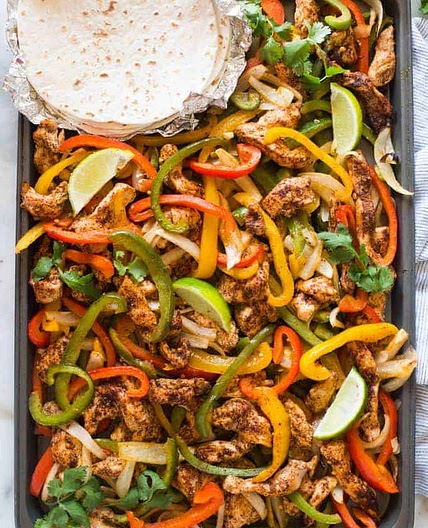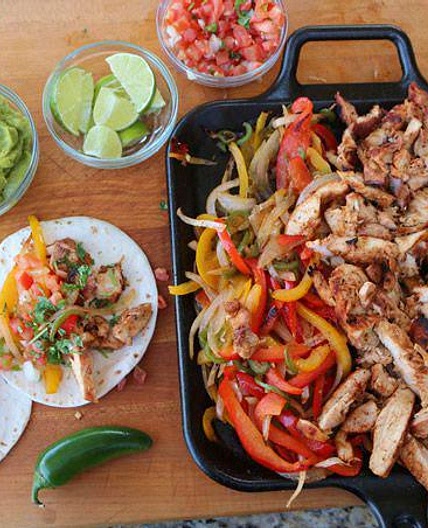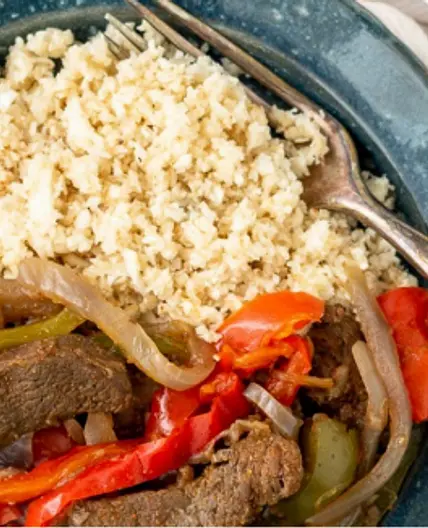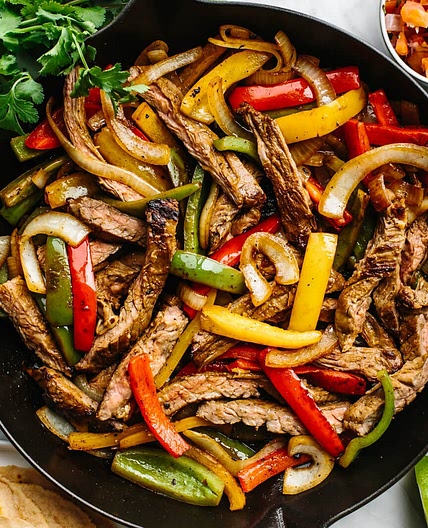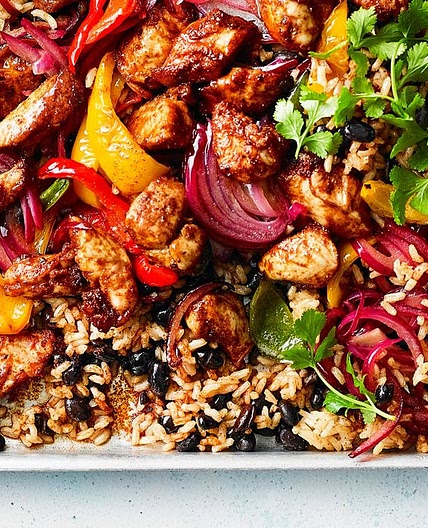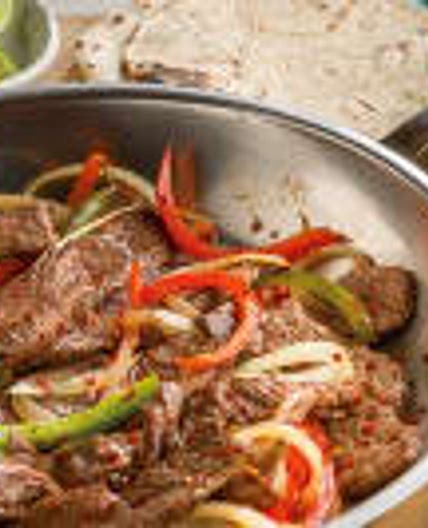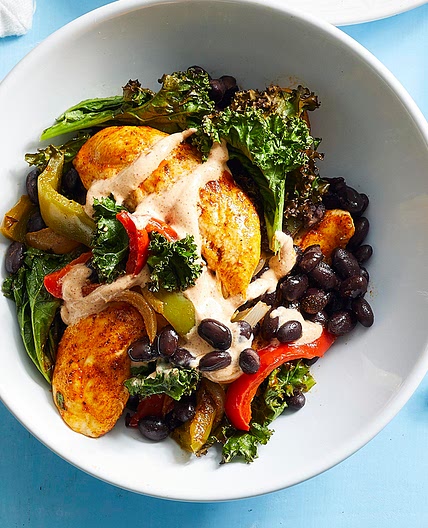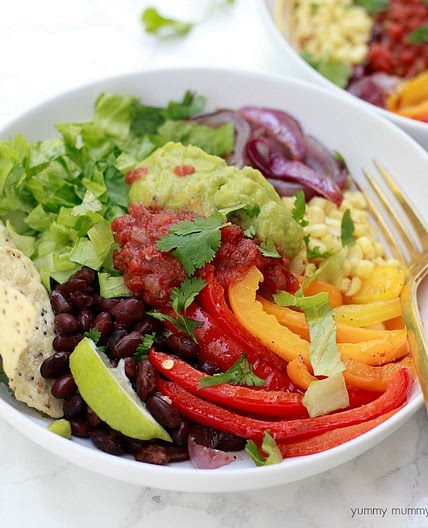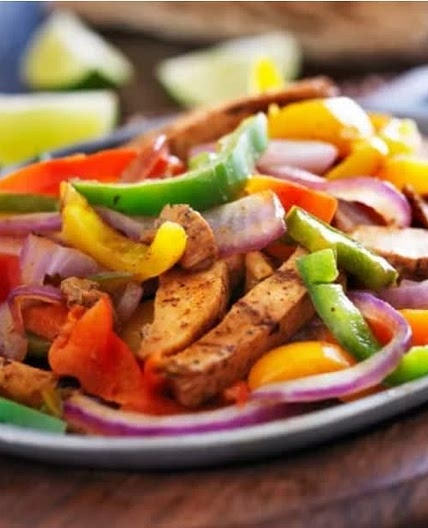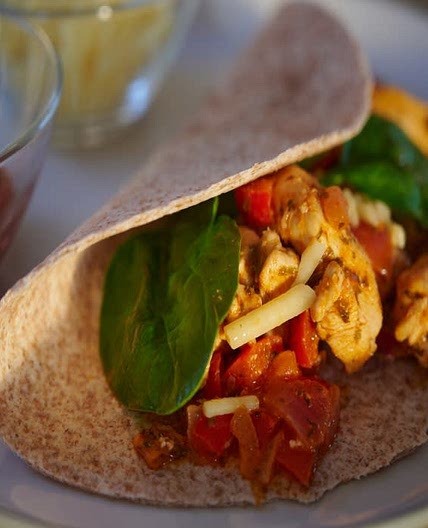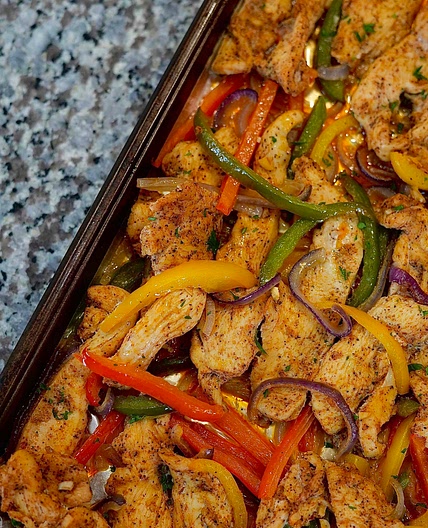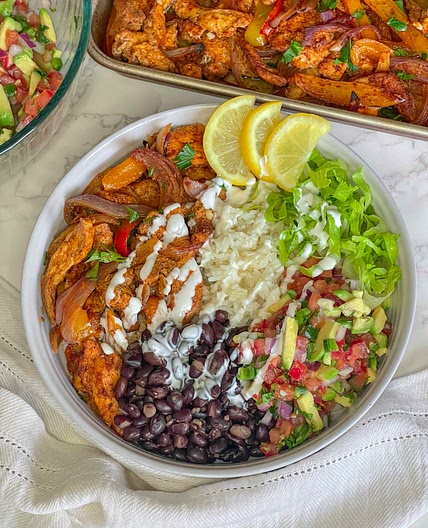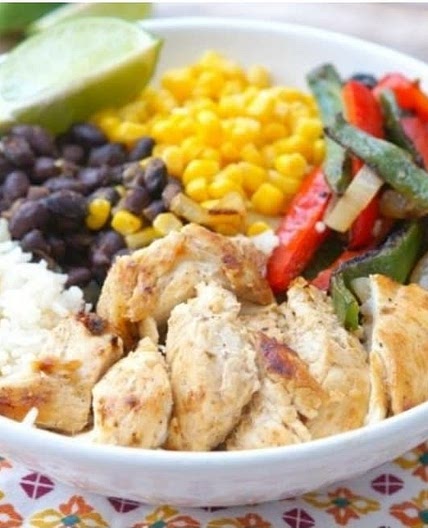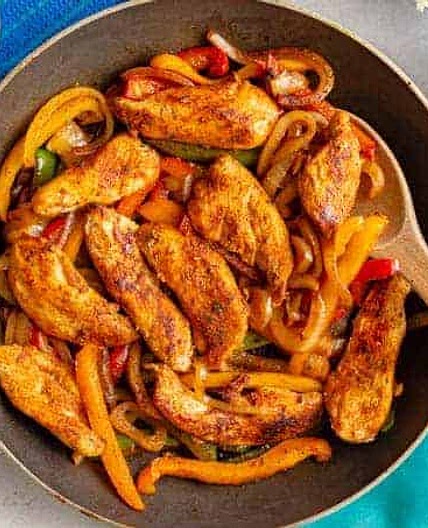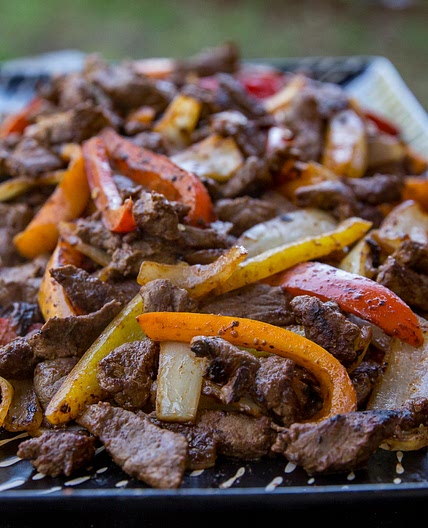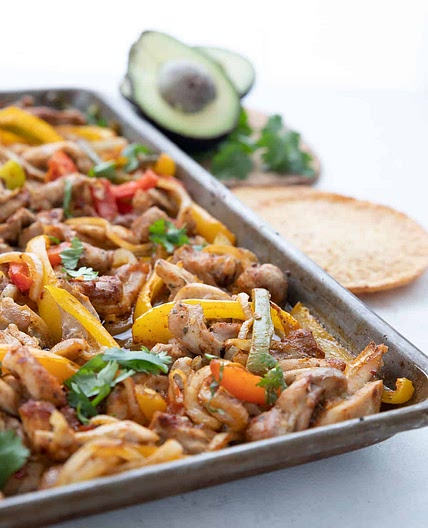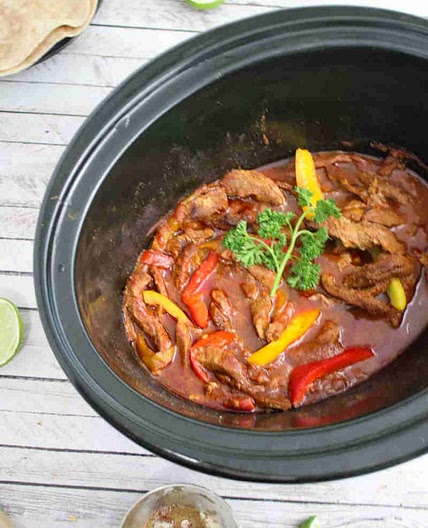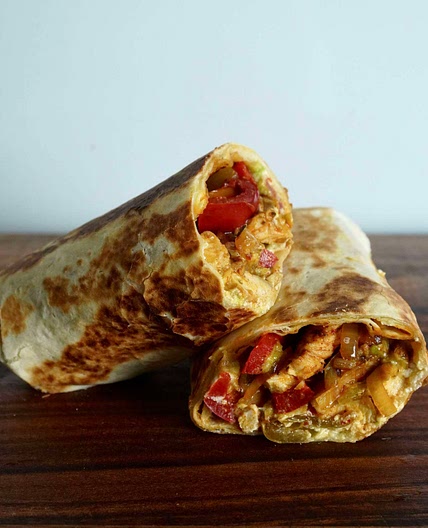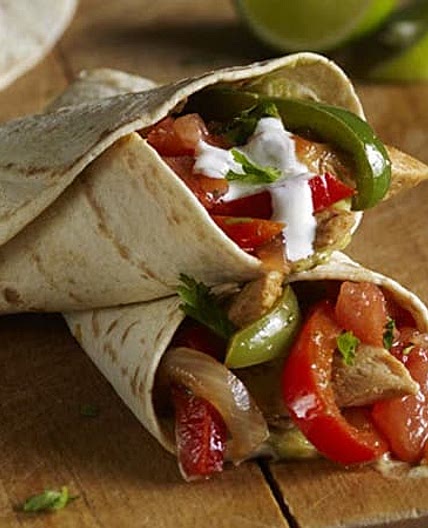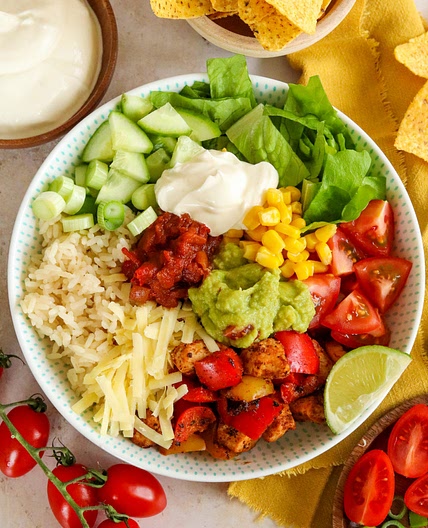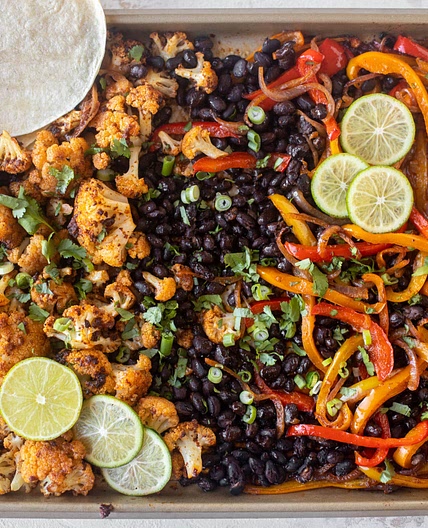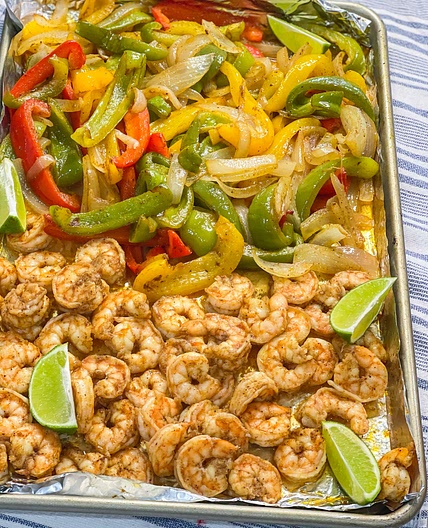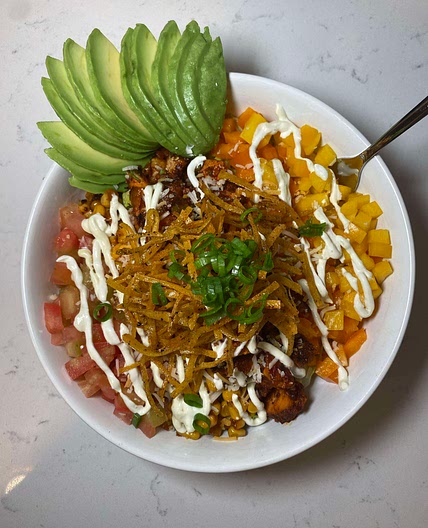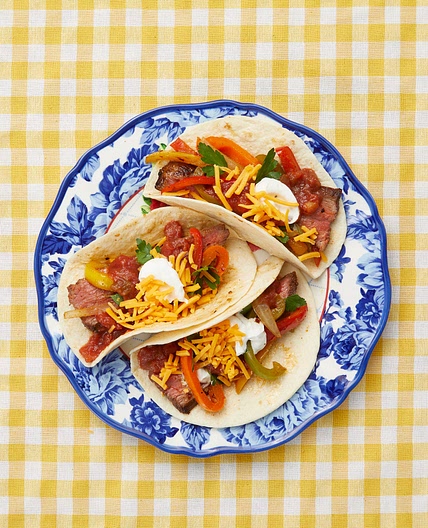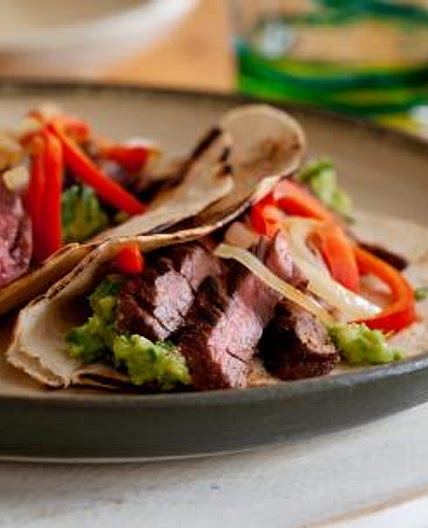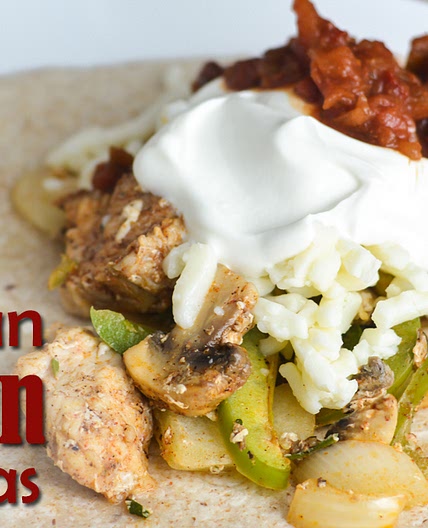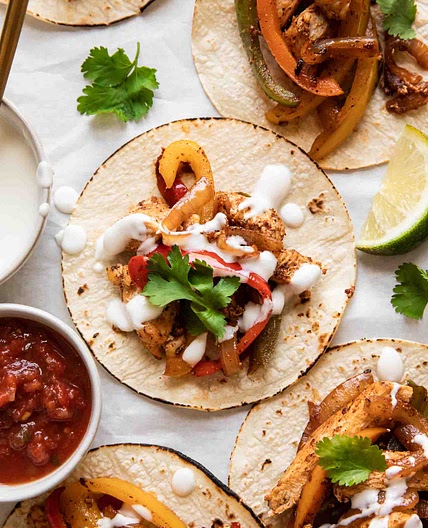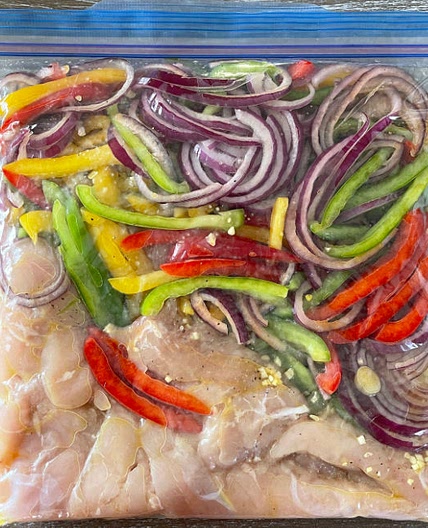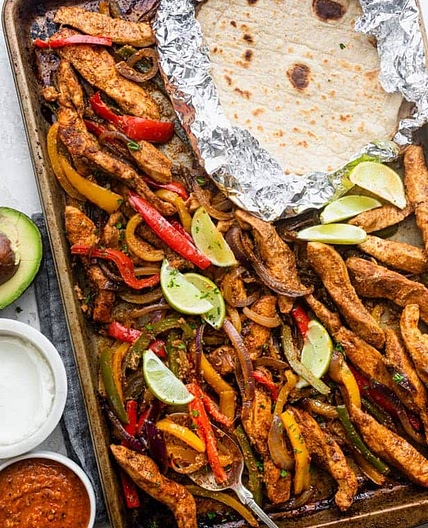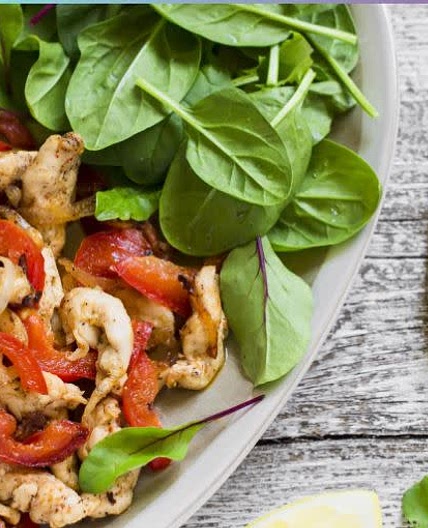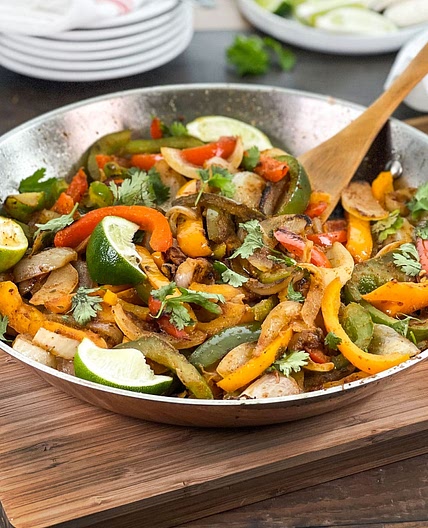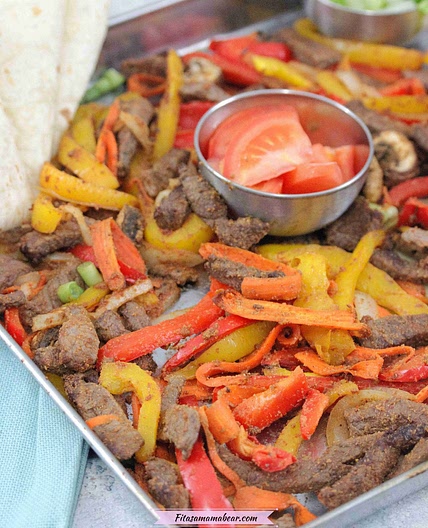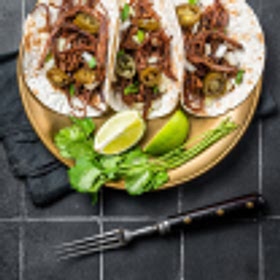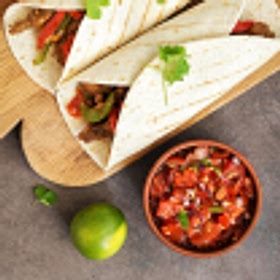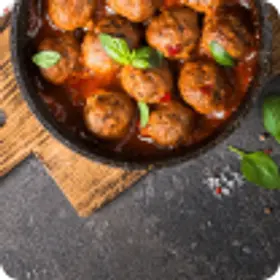A Delicious and Versatile Mexican Dish
Looking for a flavorful and customizable meal option? Learn all about fajitas, including the difference between fajitas and tacos, popular toppings and sauces, and the best way to cook fajitas. With this comprehensive guide, you'll be able to create delicious fajitas at home that are sure to impress.
Nutrition per serving size(206g)
- Energy: 165.71
- Total Fat: 7.13
- Saturated Fat: 1.45
- Carbohydrate Total: 13.22
- Sugars: 0.89
- Protein: 12.04
- Sodium: 292.07
- Fiber: 0.56
- Trans Fat: 0.02
- Monounsaturated Fat: 2.59
- Polyunsaturated Fat: 1.83
- Cholesterol: 33.09
- Calcium: 64.34
- Magnesium: 15.57
- Potassium: 189.37
- Iron: 0.77
- Zinc: 0.41
- Phosphorus: 105.42
- Vitamin A: 77.94
- Vitamin C: 14.68
- Thiamin B1: 0.05
- Riboflavin B2: 0.1
- Niacin B3: 4.1
- Vitamin B6: 0.39
- Folic Acid B9: 9.79
- Vitamin B12: 0.11
- Vitamin D: 0.01
- Vitamin E: 0.8
- Vitamin K: 5.01
- Tryptophan: 130.41
- Alpha Carotene: 2.44
- Beta Carotene: 115.9
- Omega 3 DHA: 1.69
- Omega 3 EPA: 1.53
Fajitas are a traditional Mexican dish that has become popular around the world. They are known for their sizzling presentation and delicious flavors. Fajitas have grilled strips of meat, usually beef, chicken or shrimp, cooked with vegetables such as bell peppers and onions, and served with warm tortillas. They’re usually finished off with the real stars of the show: toppings like sour cream, guacamole, salsa, and shredded cheese.
Fajitas are a versatile dish that can be prepared in many different ways. They can be made with a variety of meats, vegetables, and seasonings. They can also be served with different types of tortillas, from traditional corn tortillas to flour tortillas.
What is the best way to cook fajitas?
The best way to cook fajitas is by using a cast-iron skillet or grill pan. Preheat the skillet or grill pan over high heat for a few minutes before cooking the fajitas. This will ensure that the pan is hot enough to sear the meat and vegetables quickly, which is essential for achieving that charred, smoky flavor.
First, start by cooking the meat. You can use either beef or chicken for your fajitas, or even a combination of both. Cut the meat into thin strips against the grain, which will make it more tender. Season the meat with fajita seasoning, which typically contains chili powder, cumin, paprika, garlic powder, salt, and pepper. Cook the meat in the hot skillet or grill pan until browned on both sides, then transfer it to a plate and cover it with foil to keep it warm.
Next, cook the vegetables. Fajitas traditionally include sliced onions and bell peppers. You can also add other vegetables like mushrooms, zucchini, or squash. Sauté the vegetables in the same skillet or grill pan until they are tender and lightly charred.
To assemble the fajitas, warm the tortillas in the microwave or oven. Then, place the meat and vegetables in the center of the tortilla and add your favorite toppings, such as shredded cheese, sour cream, guacamole, salsa, or cilantro. Fold the tortilla over the filling and enjoy!
Popular Fajita Fillings
Beef fajitas are perhaps the most popular version of this dish. The beef is usually marinated in a mixture of lime juice, olive oil, garlic, and spices such as cumin and chili powder. The meat is then grilled until it is cooked to perfection, and served with sautéed onions and bell peppers.
Chicken fajitas are another popular variation. The chicken is marinated in a similar mixture of lime juice, olive oil, and spices, and then grilled or sautéed with onions and peppers.
Shrimp fajitas are a delicious alternative to beef or chicken fajitas. The shrimp are marinated in lime juice, garlic, and spices, and then grilled or sautéed with vegetables.
Vegetable fajitas are a great option for vegetarians or those who are looking for a lighter meal. They can be made with a variety of vegetables such as zucchini, mushrooms, and corn, and seasoned with spices such as cumin, chili powder, and oregano.
Fajita Sauces and Toppings
Fajitas are usually served with a variety of toppings and sauces. Some popular options include:
- Sour cream: adds a cool and creamy element to the dish.
- Guacamole: a creamy avocado dip that adds a rich flavor and texture to the fajitas.
- Salsa: a flavorful tomato-based sauce that adds a spicy kick to the dish.
- Shredded cheese: adds a rich and savory flavor to the fajitas.
What to Eat with Fajitas
Fajitas are usually served with warm tortillas, but there are many other side dishes that can be served with them. Some popular options include:
- Rice: a simple side dish that complements the flavors of the fajitas.
- Beans: a protein-rich side dish that adds a hearty element to the meal.
- Corn: a sweet and crunchy side dish that pairs well with the savory flavors of the fajitas.
- Salad: a fresh and light side dish that can help balance out the richness of the fajitas.
Frequently Asked Questions about Fajitas
What does the word “fajita” mean?
The word “fajita” comes from the Spanish word “faja,” which means “belt” or “strip.” It refers to the strips of meat that are used in the dish.
What is the difference between a fajita and a taco?
The main difference between a fajita and a taco is in the preparation and presentation. Fajitas are made with grilled or sautéed strips of meat, usually skirt steak or chicken, and are served on a sizzling hot skillet with sautéed onions and bell peppers. The tortillas are usually served on the side, along with a variety of toppings. Tacos, on the other hand, are made with a variety of fillings, such as ground beef, chicken, or fish, and are served in a folded or rolled tortilla shell with toppings such as lettuce, cheese, and salsa.
What is fajita seasoning made of?
Fajita seasoning is a blend of spices that is used to season the meat and vegetables in fajitas. The exact ingredients can vary, but typical fajita seasoning includes chili powder, cumin, garlic powder, onion powder, paprika, salt, and black pepper. Some recipes also include oregano, coriander, or red pepper flakes.
What is the concept of fajita?
The concept of fajita is a Tex-Mex dish that originated in the Southwest region of the United States in the 1930s. The term “fajita” comes from the Spanish word “faja,” which means “belt” or “sash,” and refers to the strips of meat that are used in the dish. Fajitas were originally made with skirt steak, a tough and inexpensive cut of beef that was marinated and grilled to make it more tender. The grilled meat was then served on a sizzling hot skillet with sautéed onions and bell peppers, and wrapped in a tortilla. Over time, the dish evolved to include chicken, shrimp, and a variety of vegetables, and has become a popular Tex-Mex dish enjoyed throughout the United States and beyond.
